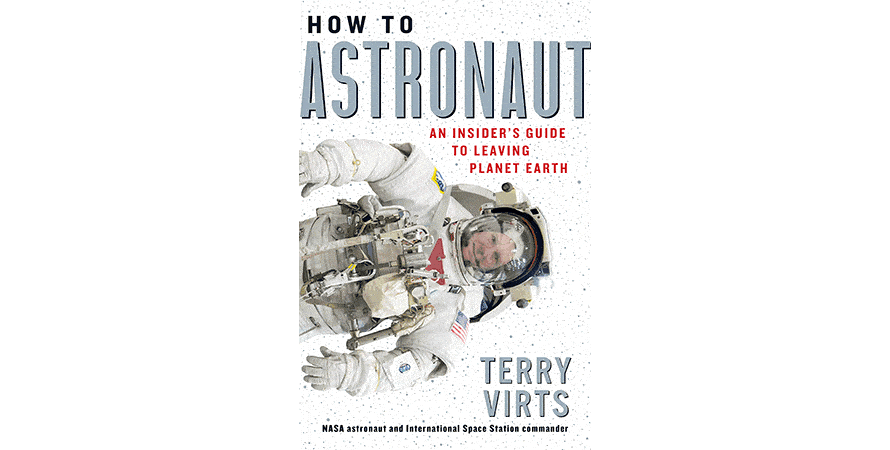Category: Non-Fiction
Reviewed by: Loretta Hall
Title: How to Astronaut: An Insider’s Guide to Leaving Planet Earth
Author: Terry Virts
NSS Amazon link for this book
Format: Hardcover/Kindle
Pages: 320
Publisher: Page Street Publishing
Date: September 15, 2020
Retail Price: $27.95/$21.95
ISBN: 978-1523509614
How to Astronaut dishes out glimpses into everyday life in space in bite-size pieces. Each of the 51 chapters describes a type of experience Terry Virts encountered during his two space missions. One was a short, two-week expedition as space shuttle pilot of Endeavour in 2010 to install the famous Cupola on the International Space Station (ISS). The other was a nearly nine-month stay aboard the ISS in 2014-2015, during part of which he served as station commander. That time, he launched and returned on a Russian Soyuz spacecraft.
Virts is candid in recalling his experiences and emotions in space. For instance, his descriptions of getting ready for the shuttle launch are quite detailed. “The first step to suiting up in an ACES [NASA acronym for spacesuit] was to put on a MAG (NASA acronym for diaper). Yup, a diaper.” After a step-by-step account of putting the spacesuit on and traveling to the launch pad, Virts describes boarding the shuttle: “I crawled through the hatch in that bulky suit, disoriented from the shuttle being in a vertical position, 90 degrees different from what I was used to from training in Houston…. The actual strap-in was painful. You had to wedge yourself into the seat, feet on the rudder pedals, trying not to step on or smash any critical switches or the control stick, all while overheating in a forty-pound spacesuit, with a parachute on your back…. The entire strap-in process took an hour.”
Don’t get the wrong idea. Virts isn’t complaining. He loves having been an astronaut with the opportunity of flying two missions. He just doesn’t pull any punches. That makes for fascinating reading, with the feeling that we are getting a true, unvarnished depiction of life in space.
One of the effects I hadn’t heard of before appears in the chapter titled “The Human Body Beyond Earth.” Virts writes, “I would occasionally tap my feet on a hard surface and … Zap! An electric, nerve-tingling sensation.” After returning to Earth, he asked a fellow astronaut, who was also a medical doctor, about that experience. He was told that the phenomenon was rare, but that one astronaut who had experienced it still has one numb leg, a few years after returning to Earth. Virts wonders, “How the heck did I spend a decade as an astronaut, talking to nearly everyone about their space experience, being trained as a Crew Medical Officer, working with NASA docs, and not hear about this?”
It is common knowledge that an astronaut’s body increases in length during spaceflight, as much as two inches, but returns to normal shortly after getting back on solid ground. Apparently, the intermittent sensation of Virts’s foot being asleep was caused by stretching of nerves, which elongated at a different rate than muscles.
Virts also had pleasant experiences too, especially visual ones. As an avid photographer, he found those particularly impressive. He describes the spectacular view from the pilot’s seat while his shuttle reentered the atmosphere in darkness: “At first there was a gentle pink glow, a brighter orange and then red, accompanied by a flashing white light above the overhead window…. The plasma was slowly swirling around, like eddies and currents on a pond. I reached up, pulled my hand out of my glove, and felt the window, which surprisingly wasn’t at all hot.”
How to Astronaut is easy to read, and its brief chapters make it convenient for making good use of short time windows. It contains a nice balance of nitty-gritty details of living in space and the emotional and intellectual analyses of the experiences. I highly recommend it.
© 2021 Loretta Hall
Please use the NSS Amazon Link for all your book and other purchases. It helps NSS and does not cost you a cent! Bookmark this link for ALL your Amazon shopping!



















